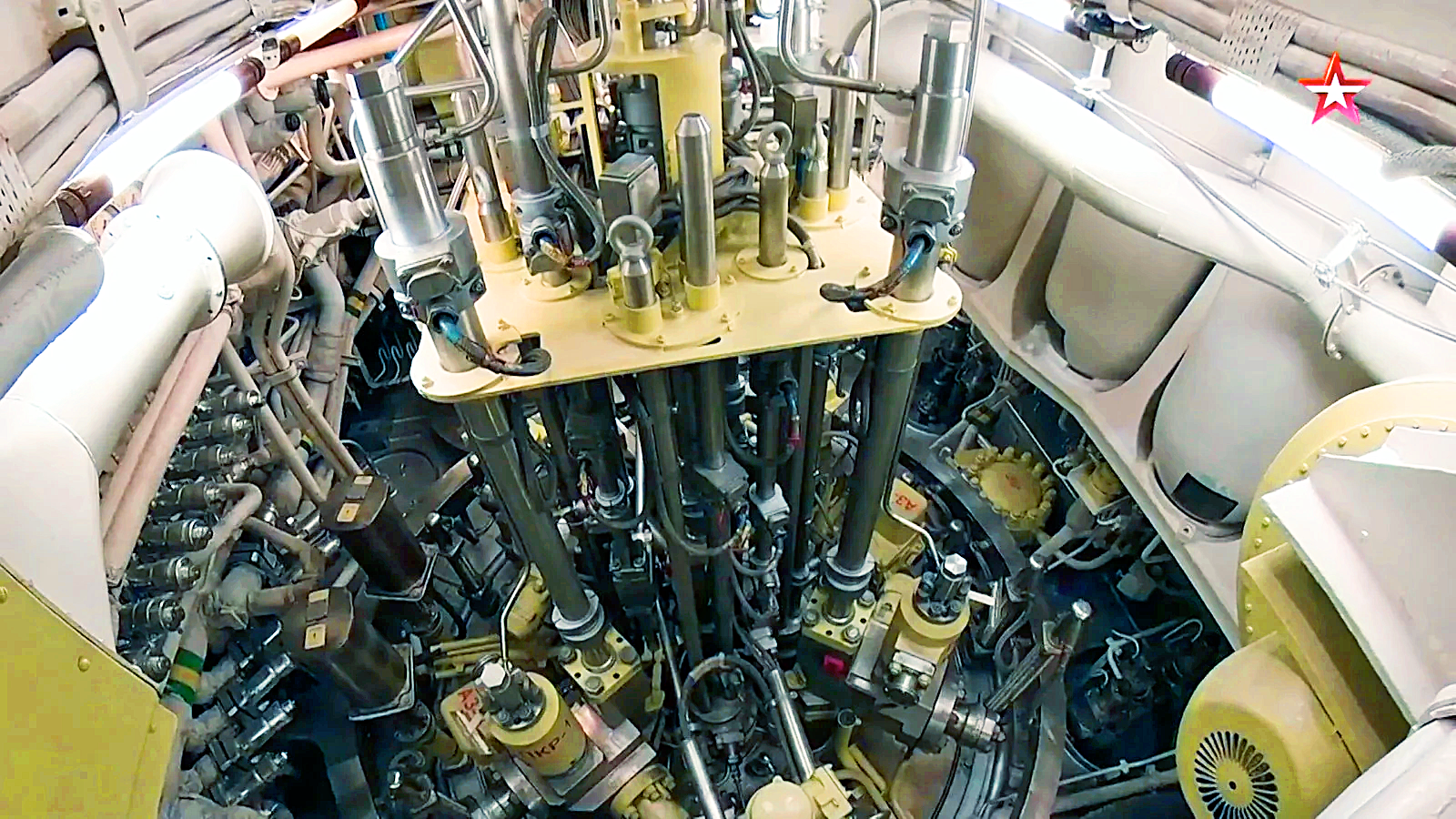The Russian Ministry of Defense has released rare footage of the inside of a reactor compartment on an operational nuclear-powered ballistic missile submarine. The clips were shot onboard the Russian Navy’s Project 667BDRM Delfin class submarine Tula and include a view of the top of the reactor itself.
TV Zvezda, the official television station of Russia’s Ministry of Defense, aired the video yesterday as part of a new episode of the program “Military Acceptance.” It said this was the first time one of its crews had been allowed to film a Russian nuclear submarine’s reactor in any way. Matus Smutny, an engineer, naval history aficionado, and contributor to The War Zone, who goes by @Saturnax1 on Twitter, was among those to spot the highly unusual footage.
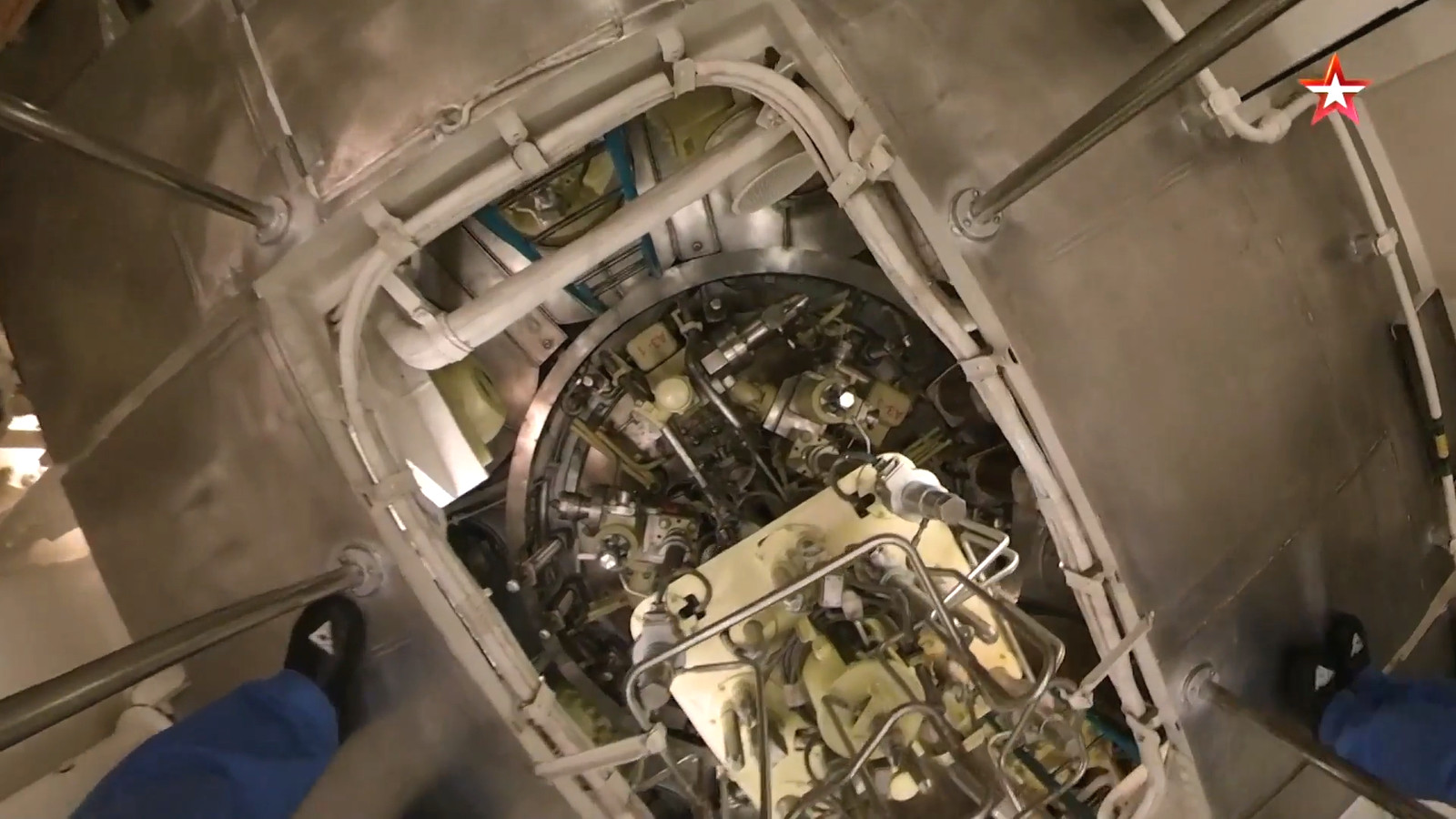
The Soviet Navy received a total of seven Project 667BDRM submarines, also known in the West as Delta IV class boats, between 1984 and 1990. These were the last of the Project 667 series of ballistic missile submarines and subsequently became part of the post-Cold War Russian Navy. One of these submarines, the Ekaterinburg, was removed from service following a devastating fire while in drydock in 2011.
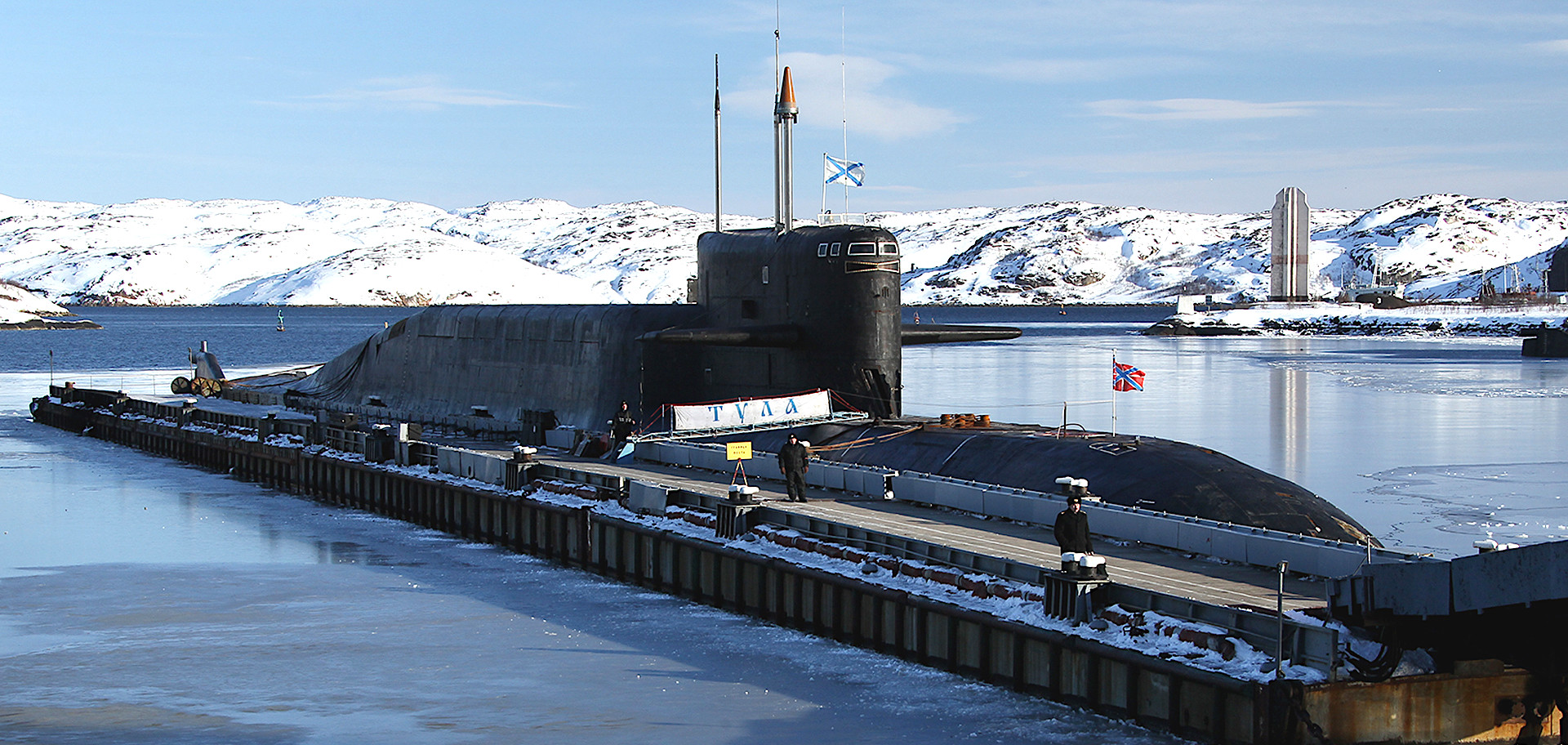
Each Delta IV class boat has a submerged displacement of around 15,500 tons and can carry up to 16 R-29RMU Sineva submarine-launched ballistic missiles. A single R-29SMU can be loaded with between 4 and 10 multiple independently targetable reentry vehicles (MIRV), depending on the exact type of nuclear warhead.
The Project 667BDRM submarines are each powered by a pair of VM-4SG pressurized water reactors (PWR). The “pressurized water” in a PWR is the coolant, which, after being heated, is converted into steam that is then used to drive associated turbines to produce electricity. The steam is then condensed back into liquid water and fed back into the reactor cooling system.
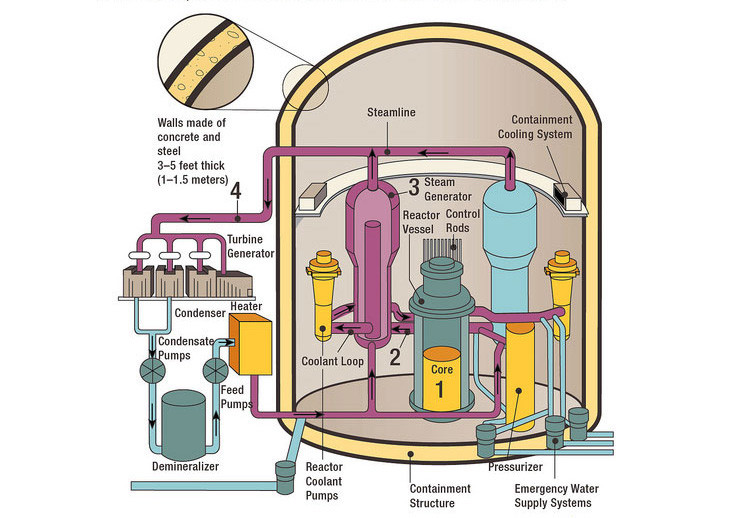
The VM-4SG is only known to be used on Delta IV class submarines, but VM-4-series designs have been in use since the 1960s. A single VM-4SG can generate up to around 90 megawatts of electricity according to the 2000-2001 edition of the U.S. Naval Institute’s Guide to Combat Fleets of the World. For comparison, a U.S. Navy Ohio class nuclear-powered ballistic missile submarine has a single S8G reactor, which is estimated to be able to produce at least 220 megawatts of electricity.
TV Zvezda‘s footage shows the ‘lid’ of the reactor vessel, which holds the nuclear fuel, with the control rods that moderate the nuclear reaction inside seen jutting out from the top. As seen are various coolant and steam pipes, among other components of the complete reactor system.
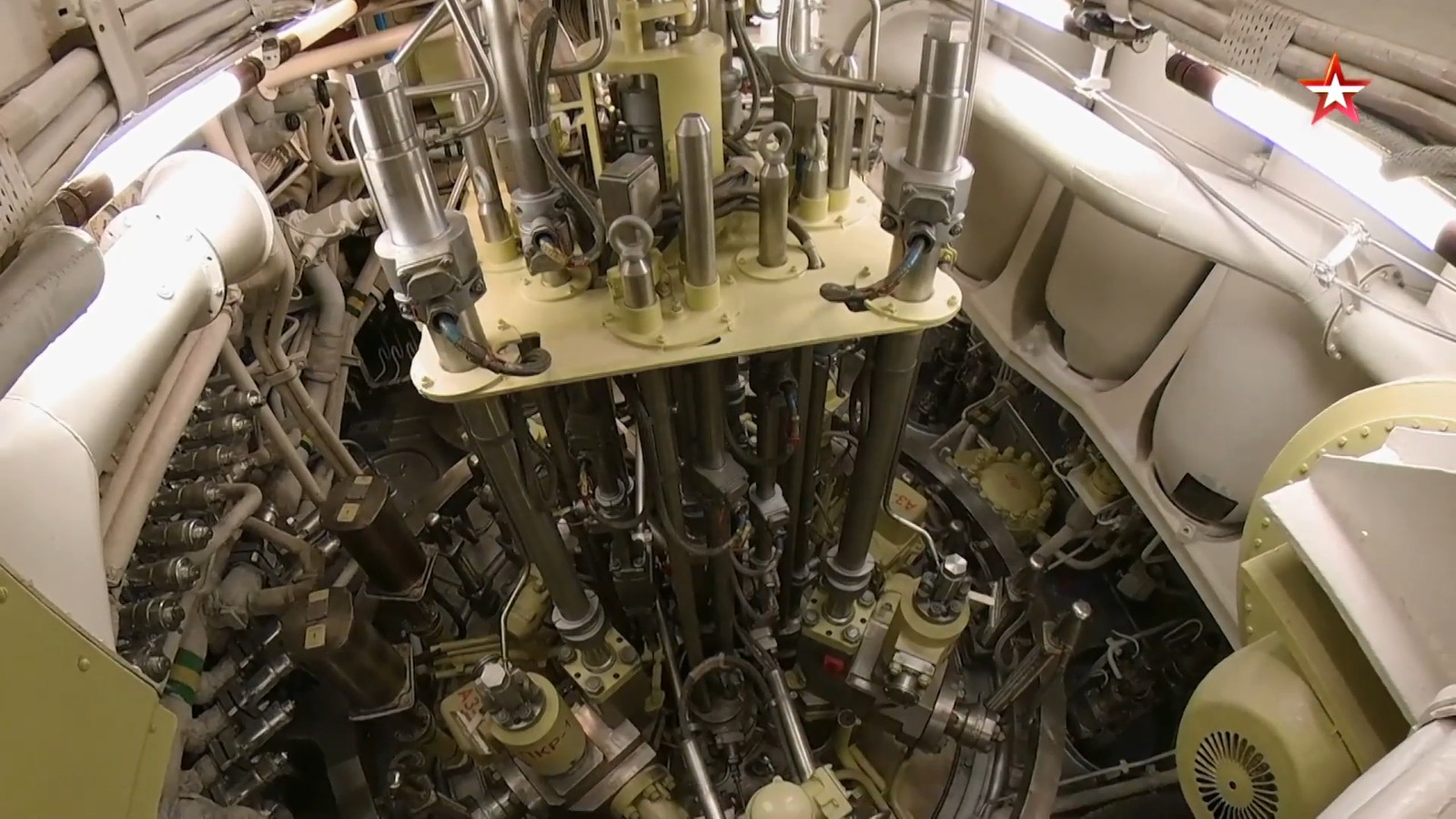
The VM-4SG is designed to run for around 10 years before the fuel inside is considered spent, according to TV Zvezda. The exact composition of the fuel rods is unclear, but they reportedly use low-enriched uranium and the total amount of actual fissile material is “approximately equal to a bucket,” a sailor onboard Tula reportedly told the production crew. In contrast, the reactors on American nuclear submarines use highly-enriched, weapons-grade uranium.
Crew members do not regularly occupy the compartment that the reactor sits in, but come in to ensure that it is clean and otherwise inspect it weekly, per the TV Zvezda report. The compartment itself is the warmest in the submarine, but it is climate controlled to keep it at a steady temperature of no more than 30 degrees Celsius, or around 86 degrees Fahrenheit. To help mitigate heat build-up, much of the inside of the reactor compartment is painted white, unlike the typically yellow color used for the inside of Russian submarines. Some parts are still in yellow, too.
As is the case with any nuclear-powered vessel, the two VM-4SGs that power Tula and its sister submarines give them virtually unlimited range. This is particularly important for nuclear ballistic missile submarines, which rely on their ability to “disappear” underwater for months at a time to ensure they provide a credible second-strike nuclear deterrent capability for the countries that operate them.
At present, only Russia, the United States, China, France, the United Kingdom, and India operate nuclear ballistic missile submarines, also commonly referred to as SSBNs or ‘boomers’.
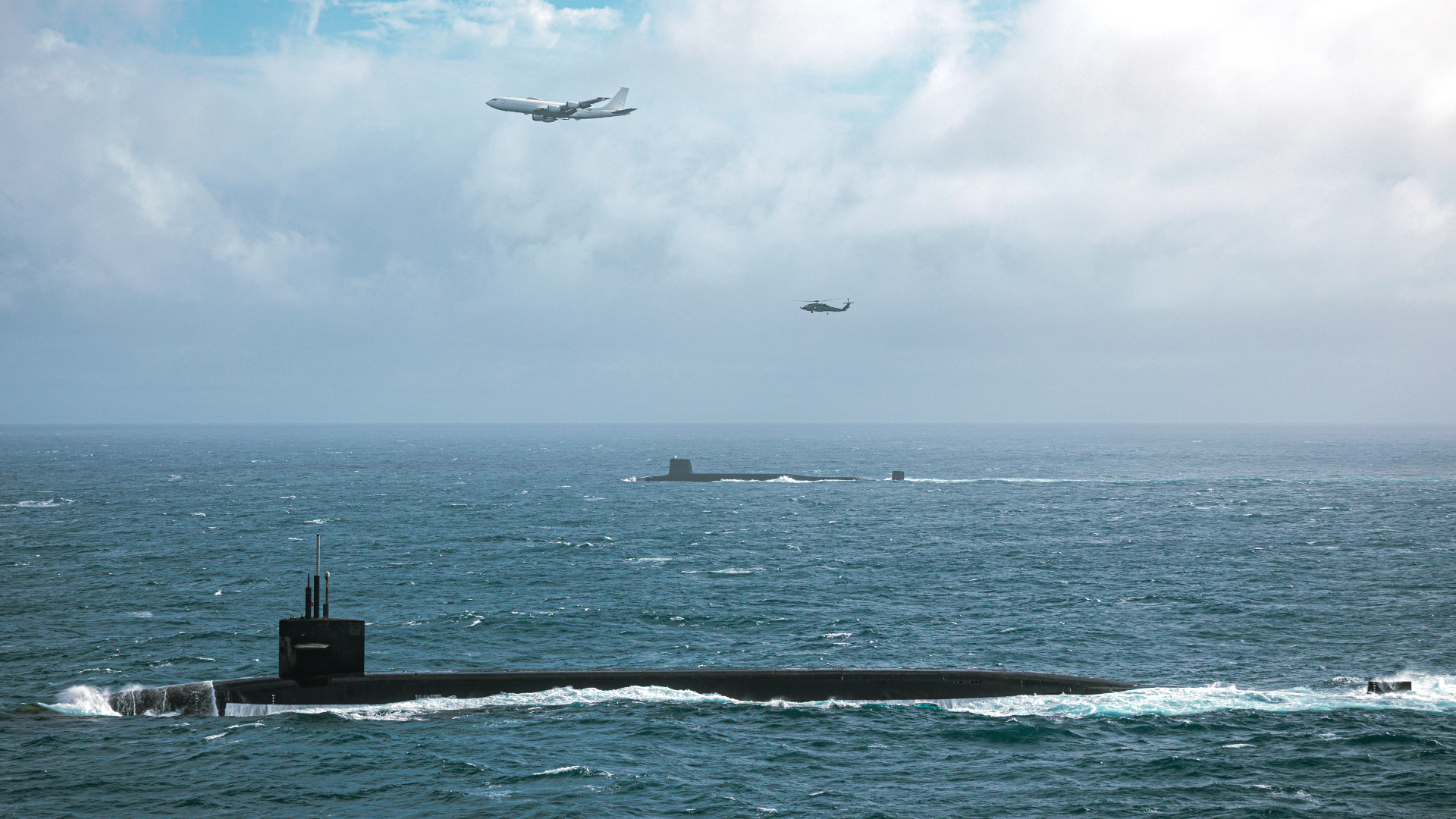
Reactors for nuclear-powers submarines, in general, have to be relatively compact, but still powerful. All around, the technology inside them is typically treated as very sensitive, and getting a look at any part of one is rare.
Why TV Zvezda was granted the recent opportunity to film one of the reactors inside Tula is unclear. Though the Russian Navy continues to commission new Borei class SSBNs, the Delta IV class boats remain very much in active service. Both types took part in an unprecedented exercise in 2021 that saw three Russian boomers surface through the ice nearly simultaneously in the Arctic.

TV Zvezda has certainly gotten significant access to film inside various Russian Navy submarines in recent years, as well as new boats under construction, highlighting various unique features of their designs.
The rest of the recent episode of “Military Acceptance” on Tula offered up-close looks at various other areas inside, including of another very different steam-producing system – its sauna, or banya. This is a morale-boosting feature also found on other Russian submarines.

Other TV Zvezda programming has provided unusually detailed footage of other sensitive systems in recent years, too. This includes an in-depth look last year at the payload bus for the R-36M2 intercontinental ballistic missile – also known in the West as the SS-18 Mod 5 Satan – and the first-ever public showing of a Shchit-2 ‘space missile’ in 2021.
When it comes to nuclear weapons, Russia has regularly called attention to its strategic arsenal in the past year or so as part of saber-rattling aimed at countries, including the United States, that are supporting Ukraine, as well as authorities in Kyiv. The recent “Military Acceptance” episode on Tula did include a clip showing the launch of an unarmed R-29RMU missile.
Whatever the exact reasoning might have been, we have now gotten a rare close-up look at one of the two VM-4SG nuclear reactors that power each one of the Russian Navy’s Delta IV class SSBNs.
Contact the author: joe@thedrive.com
